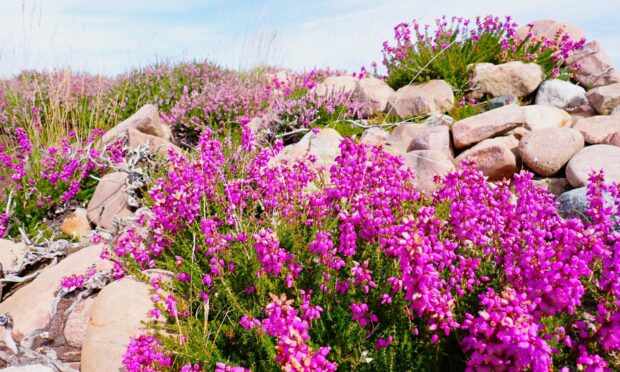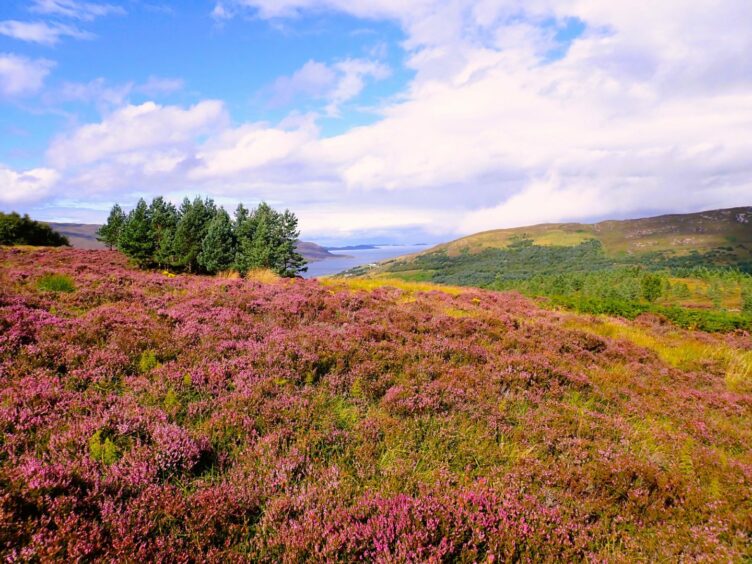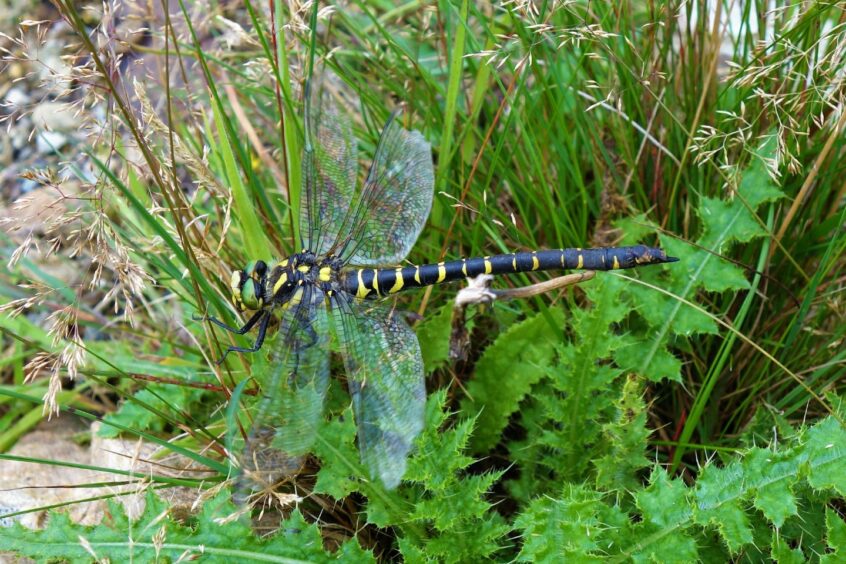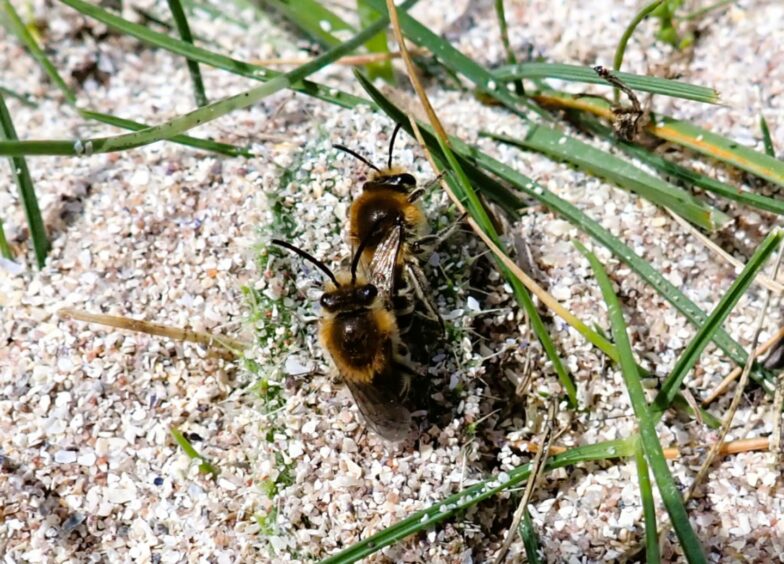A broad sweeping carpet of purple heather unfolded before me on the Braes of Ullapool, with the mirror-like waters of Loch Broom shimmering beyond.
It was magical vista and so typically Scottish – mountains, lochs, and an abundance of heather – a picture postcard of Caledonia at its best.
The heather reminded me of a Polish friend when on visiting Scotland was keen to see the splendour of a heather moorland in late summer.
So, I took her to Glen Dye between Banchory and Fettercairn, and she became instantly smitten by the purple spell of the Highlands.
Abundant
As the name suggests, common heather, with the generic name Calluna, is the most abundant type and sports tiny lilac flower-spikes, which combine to create the greater floral magnificence.
In England it is sometimes known as ‘ling’, a derivation from the Anglo-Saxon word ‘lig’, meaning fire, which reflects upon the importance of heather in early times as an easy-burning fuel.
In Scotland, heather ale was a favoured tipple of Highlanders, and which was first brewed by the Picts as evidenced by drinking vessels found by archaeologists.
As I trekked-up the Braes of Ullapool, there were also clusters of bell heather, with their nodding purple heads, and isolated clumps of cross-leaved heath, which has blooms that are pinker in tint.
Bell heather prefers to grow in drier areas, whereas cross-leaved heath prospers in boggy margins, which is useful to know when trying to navigate a route across open moor.
Dragonfly
A golden-ringed dragonfly whooshed past on purposeful wings, then abruptly changed direction and whirred back in my direction, before alighting on a spike of heather.
I crept closer, but not too close, for dragonflies have excellent eyesight and it would be away in an instant if determined it had been spotted.
Golden-ringed dragonflies are large, exquisite insects, with a wingspan of up to 10cm, and striking yellow bands patterning the dark abdomen.
Earlier that week, I had ventured to nearby Slaggan Bay, which lies at the mouth of Loch Ewe.
Here, on a steep sandy slope that swept down to the beach, buzzed hordes of girdled colletes bees, which are a type of mining bee.
These wee striped bees were engaged in a mating frenzy, with little clusters of the insects squirming over one another on the ground.
The ‘kleep, kleep’ calls of a pair of oystercatchers drifted across the sea breeze, and on looking out across the sea loch, tears welled in my eyes.
Arctic Convoys
Eighty or so years ago, my father had regularly departed Loch Ewe as a young Royal Navy officer heading out on the Arctic Convoys to Murmansk in Russia – a voyage Winston Churchill dubbed ‘the worst journey in the world’.
My mind turned back to the mining bees.
We still live in troubled times, and rather than engaging in pointless conflict, these little marvels of buzzing energy put into perspective what humanity should be focusing on – the protection of our precious environment and its unbridled beauty.




Conversation